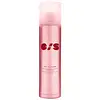What's inside
What's inside
 Key Ingredients
Key Ingredients

 Benefits
Benefits

 Concerns
Concerns

 Ingredients Side-by-side
Ingredients Side-by-side

Water
Skin ConditioningPropanediol
SolventLauryl Lactate
EmollientPvp
Emulsion StabilisingGlycerin
HumectantMagnesium Chloride
Niacinamide
SmoothingSea Water
HumectantCitrus Limon Fruit Extract
MaskingKappaphycus Alvarezii Extract
Skin ConditioningOpuntia Ficus-Indica Stem Extract
Skin ConditioningScenedesmus Rubescens Extract
Skin ConditioningAgave Tequilana Leaf Extract
AstringentZinc Lactate
Polymethylsilsesquioxane
Phenoxyethanol
PreservativeEthylhexylglycerin
Skin ConditioningSodium Benzoate
MaskingPotassium Sorbate
PreservativeParfum
MaskingCoumarin
PerfumingLimonene
PerfumingLinalool
PerfumingWater, Propanediol, Lauryl Lactate, Pvp, Glycerin, Magnesium Chloride, Niacinamide, Sea Water, Citrus Limon Fruit Extract, Kappaphycus Alvarezii Extract, Opuntia Ficus-Indica Stem Extract, Scenedesmus Rubescens Extract, Agave Tequilana Leaf Extract, Zinc Lactate, Polymethylsilsesquioxane, Phenoxyethanol, Ethylhexylglycerin, Sodium Benzoate, Potassium Sorbate, Parfum, Coumarin, Limonene, Linalool
Butane
Alcohol Denat.
AntimicrobialIsobutane
Diisopropyl Adipate
EmollientMagnesium Carbonate
AbsorbentAlcohol
AntimicrobialMethacryloyl Ethyl Betaine/Acrylates Copolymer
Water
Skin ConditioningParfum
MaskingHamamelis Virginiana Water
AstringentAloe Barbadensis Leaf Juice
Skin ConditioningPanthenol
Skin ConditioningCamellia Sinensis Leaf Extract
AntimicrobialTocopheryl Acetate
AntioxidantGlycerin
HumectantPhenoxyethanol
PreservativeCucumis Sativus Fruit Extract
EmollientBenzoic Acid
MaskingLimonene
PerfumingLinalool
PerfumingHexyl Cinnamal
PerfumingButane, Alcohol Denat., Isobutane, Diisopropyl Adipate, Magnesium Carbonate, Alcohol, Methacryloyl Ethyl Betaine/Acrylates Copolymer, Water, Parfum, Hamamelis Virginiana Water, Aloe Barbadensis Leaf Juice, Panthenol, Camellia Sinensis Leaf Extract, Tocopheryl Acetate, Glycerin, Phenoxyethanol, Cucumis Sativus Fruit Extract, Benzoic Acid, Limonene, Linalool, Hexyl Cinnamal
 Reviews
Reviews

Ingredients Explained
These ingredients are found in both products.
Ingredients higher up in an ingredient list are typically present in a larger amount.
Glycerin is already naturally found in your skin. It helps moisturize and protect your skin.
A study from 2016 found glycerin to be more effective as a humectant than AHAs and hyaluronic acid.
As a humectant, it helps the skin stay hydrated by pulling moisture to your skin. The low molecular weight of glycerin allows it to pull moisture into the deeper layers of your skin.
Hydrated skin improves your skin barrier; Your skin barrier helps protect against irritants and bacteria.
Glycerin has also been found to have antimicrobial and antiviral properties. Due to these properties, glycerin is often used in wound and burn treatments.
In cosmetics, glycerin is usually derived from plants such as soybean or palm. However, it can also be sourced from animals, such as tallow or animal fat.
This ingredient is organic, colorless, odorless, and non-toxic.
Glycerin is the name for this ingredient in American English. British English uses Glycerol/Glycerine.
Learn more about GlycerinLimonene is a fragrance that adds scent and taste to a formulation.
It's found in the peel oil of citrus fruits and other plants such as lavender and eucalyptus. The scent of limonene is generally described as "sweet citrus".
Limonene acts as an antioxidant, meaning it helps neutralize free radicals.
When exposed to air, oxidized limonene may sensitize the skin. Because of this, limonene is often avoided by people with sensitive skin.
The term 'fragrance' is not regulated in many countries. In many cases, it is up to the brand to define this term. For instance, many brands choose to label themselves as "fragrance-free" because they are not using synthetic fragrances. However, their products may still contain ingredients such as essential oils that are considered a fragrance.
Learn more about LimoneneLinalool is a fragrance and helps add scent to products. It's derived from common plants such as cinnamon, mint, citrus, and lavender.
Like Limonene, this ingredient oxidizes when exposed to air. Oxidized linalool can cause allergies and skin sensitivity.
This ingredient has a scent that is floral, spicy tropical, and citrus-like.
Learn more about LinaloolParfum is a catch-all term for an ingredient or more that is used to give a scent to products.
Also called "fragrance", this ingredient can be a blend of hundreds of chemicals or plant oils. This means every product with "fragrance" or "parfum" in the ingredients list is a different mixture.
For instance, Habanolide is a proprietary trade name for a specific aroma chemical. When used as a fragrance ingredient in cosmetics, most aroma chemicals fall under the broad labeling category of “FRAGRANCE” or “PARFUM” according to EU and US regulations.
The term 'parfum' or 'fragrance' is not regulated in many countries. In many cases, it is up to the brand to define this term.
For instance, many brands choose to label themselves as "fragrance-free" because they are not using synthetic fragrances. However, their products may still contain ingredients such as essential oils that are considered a fragrance by INCI standards.
One example is Calendula flower extract. Calendula is an essential oil that still imparts a scent or 'fragrance'.
Depending on the blend, the ingredients in the mixture can cause allergies and sensitivities on the skin. Some ingredients that are known EU allergens include linalool and citronellol.
Parfum can also be used to mask or cover an unpleasant scent.
The bottom line is: not all fragrances/parfum/ingredients are created equally. If you are worried about fragrances, we recommend taking a closer look at an ingredient. And of course, we always recommend speaking with a professional.
Learn more about ParfumPhenoxyethanol is a preservative that has germicide, antimicrobial, and aromatic properties. Studies show that phenoxyethanol can prevent microbial growth. By itself, it has a scent that is similar to that of a rose.
It's often used in formulations along with Caprylyl Glycol to preserve the shelf life of products.
Water. It's the most common cosmetic ingredient of all. You'll usually see it at the top of ingredient lists, meaning that it makes up the largest part of the product.
So why is it so popular? Water most often acts as a solvent - this means that it helps dissolve other ingredients into the formulation.
You'll also recognize water as that liquid we all need to stay alive. If you see this, drink a glass of water. Stay hydrated!
Learn more about Water